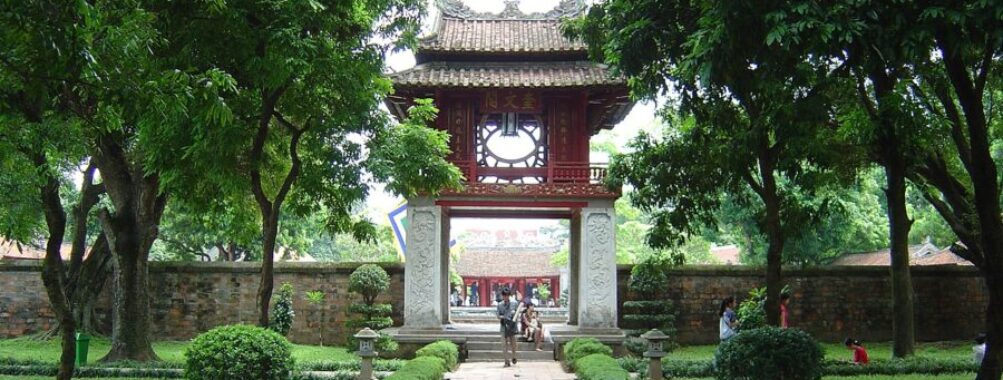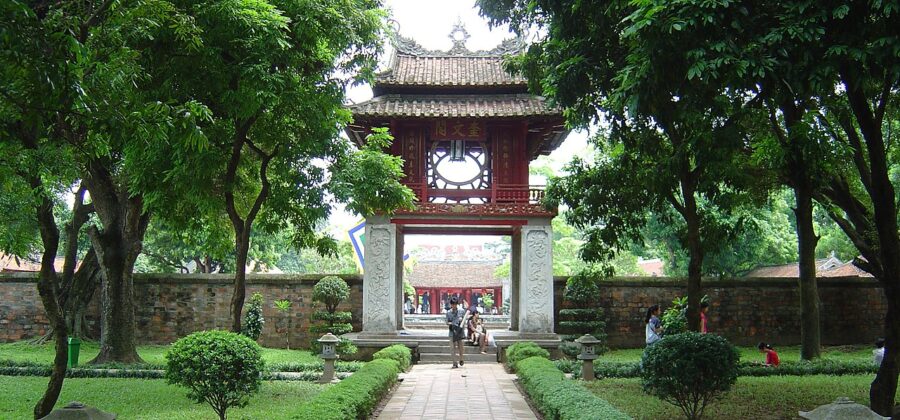
Temple Of Literature
Table of Contents
History and Significance

The Temple of Literature, or Văn Miếu, isn’t just any old temple; it’s a journey through Vietnam’s history. Established way back in 1070 by Emperor Lý Thánh Tông, it was initially dedicated to Confucius and served as a place of learning for the Vietnamese royalty. Then, six years later, in 1076, it became Vietnam’s first university, Quốc Tử Giám, and started educating the elite. And that’s when the magic truly began. Think about it – for centuries, brilliant minds walked these courtyards, absorbing knowledge and shaping the future of the nation. Even now, walking through the temple, you can almost feel the echoes of their scholarly debates. You will also find that Confucianism and Vietnamese education are deeply intertwined within the Temple of Literature complex.
Main Attractions and Activities
So, you’ve made it to the Temple of Literature in Hanoi. Now what? Well, prepare to be wowed. The entire complex is divided into five courtyards, each offering something special. You’ll encounter places like:
- The first courtyard, a serene garden perfect for a contemplative stroll.
- The Khue Van Pavilion in the second courtyard is a stunning structure and one of the temple’s most iconic images.
- The third courtyard, where you’ll find the Well of Heavenly Clarity.
- The fourth courtyard, home to the stelae of doctors.
These steles sit atop stone turtles, and each one commemorates graduates of the first university of Vietnam. Each turtle represents longevity and wisdom, and I assure you, they are truly impressive.
Visitor Experience
Your visitor experience at the Temple of Literature will vary based on when you decide to visit. The complex gets crowded, especially during peak tourist seasons and holidays like Tet (Vietnamese New Year). If you’re aiming for a more tranquil visit, try to arrive early in the morning or later in the afternoon. I prefer mornings; there’s something magical about seeing the first rays of sunlight touch the ancient roofs. Wander through each of the five courtyards at your own pace, taking in the stunning traditional Vietnamese architecture. Pay close attention to the intricate details of the Khue Van Pavilion and the meticulously maintained gardens.
Tips for Visitors
Want to make the most of your visit to Văn Miếu? Okay, here are a few tips. To ensure a smooth and enriching experience, remember to:
- Dress respectfully. Shoulders and knees should be covered.
- Double-check the opening hours before you go, as they can vary slightly.
- Consider hiring a local guide. While the information plaques are helpful, a guide can provide deeper insights into the history and significance of the Temple of Literature in Hanoi. The guides will give you a better feel for the Confucian values that are symbolized by the complex.
- Bring water, especially if you’re visiting during the hotter months. It can get pretty humid in Hanoi!
- Be mindful of your belongings, especially in crowded areas.
Accessibility and Facilities
Let’s talk about accessibility and facilities at the Temple of Literature in Hanoi. The complex is generally accessible, but keep in mind that some areas may have uneven surfaces or steps, especially in the fourth courtyard where the stone stele are located. If you have mobility issues, it’s a good idea to plan your route accordingly. And yes, there are restrooms available, but don’t expect five-star amenities. They’re functional. You’ll find a few souvenir shops near the entrance if you want to pick up a memento of your visit. And if you get hungry, there are plenty of food stalls and cafes just outside the temple grounds in Hanoi. The fifth courtyard holds the temple that is dedicated to Confucius. There are stone turtles everywhere!
Unique Features
The Temple of Literature in Hanoi isn’t just another historical site; it’s a unique reflection of Vietnam’s dedication to education and its deep Confucian roots. And honestly, the unique charm of Văn Miếu lies in its seamless blend of history, architecture, and serene gardens. Each of the five courtyards has its distinct character, from the tranquil first courtyard, perfect for reflective walks, to the solemn fifth courtyard dedicated to Confucius. The stelae of doctors, resting on the backs of stone turtles in the fourth courtyard, are particularly striking, symbolizing longevity and the enduring pursuit of knowledge. I am particularly fond of the Khue Van Pavilion. And don’t even get me started on the meticulously preserved traditional Vietnamese architecture; it is all so perfect.
Overall Impressions
My overall impression of the Temple of Literature is overwhelmingly positive. The complex provides a serene escape from the bustling streets of Hanoi, offering a peaceful atmosphere to reflect on Vietnam’s rich cultural heritage. The meticulous architecture, with its intricate details and harmonious blend of nature and structure, leaves a lasting impression. I mean, you can feel the centuries of history as you wander through the grounds. The stele and stone turtles of the fourth courtyard offer a tangible connection to the scholars who shaped Vietnam. The Khue Van Pavilion stands out as a timeless symbol of literature and enlightenment. If you ask me, it’s a must-see attraction!
Pros and Cons
The Temple of Literature, like any popular attraction, presents a mixed experience. There are some great things about visiting, such as:
- It’s a significant historic site that offers insight into Vietnamese history, Confucianism, and the importance of education.
- The traditional Vietnamese architecture is beautiful, and the courtyards provide a calm respite from the bustling city.
However, some drawbacks exist. The crowds, especially during busy times like Tet, can be overwhelming and make it difficult to fully appreciate the stelae of the fourth courtyard. The facilities are adequate, but not luxurious. Visiting during peak season is not recommended, and hiring a guide could increase the visit cost.
Location
Places to Stay Near Temple Of Literature
Find and Book a Tour
Explore More Travel Guides
No reviews found! Be the first to review!